A reader of this site and friend of mine on Twitter, Pieter Christiaens, recently told me that he had started doing his weightlifting differently, training with high intensity using the “hybrid protocol”, the system of Enrico Dell’olio. (The book is available only in Italian; I see an opportunity in an English translation.)
Pieter told me that he’s been able to break a 2-year plateau and gain 5 lbs of muscle in 6 months using this system. His workouts averaged less than 30 minutes each, twice a week. Here’s a video of Pieter talking about his training and upcoming physique competition.
He said that the workouts are so intense that he couldn’t do them without the trainer pushing him — his trainer was Dell’olio himself. Pieter recommended that I read High-Intensity Training: the Mike Mentzer Way, so I did.
The late Mike Mentzer won the Mr. Universe contest in 1978, and he used a high-intensity system. He says that at the time he won, his total weekly workout time was under 2.5 hours.

What is high-intensity training?
Mentzer came to high-intensity training after losing a contest and finding that the winner, Casey Viator, trained that way. He previously had been spending up to 3 hours a day in the gym.
The key to high-intensity training is the promotion of intensity over other measures of muscle-building, namely volume, load, and frequency.
Volume entails many sets per body part or exercise. German volume training, for instance, advocates up to 10 sets for each exercise.
Load means reaching for the heaviest weight possible. Power lifters do at least some of their training this way.
Frequency means getting into the gym often. Some bodybuilders hit the gym literally every day of the week.
Scientific studies on these aspects of muscle-building are legion, so I’m not going to cite many of them here. But I will point to a review, Strength Training Methods and the Work of Arthur Jones, the abstract of which reads(1):
Jones advocated that those interested in improving their muscular size, strength, power and/or endurance should perform one set of each exercise to muscular failure (volitional fatigue), train each muscle group no more than once (or, in some cases, twice) per week, perform each exercise in a slow, controlled manner and perform a moderate number of repetitions (for most people, ~8-12). This advice is very different to the strength training guidelines offered by the National Strength and Conditioning Association, the American College of Sports Medicine and most exercise physiology textbooks. However, in contrast to the lack of scientific support for most of the recommendations made by such bodies and in such books, Jones’ training advice is strongly supported by the peer-reviewed scientific literature, a statement that has recently been supported by a review of American College of Sports Medicine resistance training guidelines. [My emphasis.]
In contrast to the usual bodybuilding workouts, this type of training advocates
- One set to failure, not multiple sets
- Each set done to failure
- Slow cadence of repetitions
- Working each muscle group no more than once a week
Mentzer’s style of training is essentially his refinement of Jones’s protocol.
Why high-intensity training?
Mentzer obviously thought high-intensity training a superior way to build muscle. At a time, just as now, when serious bodybuilders spend many hours a week in the gym, Mentzer did not.
He also won a contest against strong competitors using this system. Then again, he later lost, and besides this, many other factors intervene in bodybuilding besides the training methods of the competitors, factors like genetics, diet, age, and steroid use. Therefore it’s difficult to say which training methods are better.
However, as we saw above, the scientific evidence supports high-intensity training. Multiple sets don’t build more muscle than one, that’s assuming the set is done properly and to failure. (Image below from reference 1 above.)
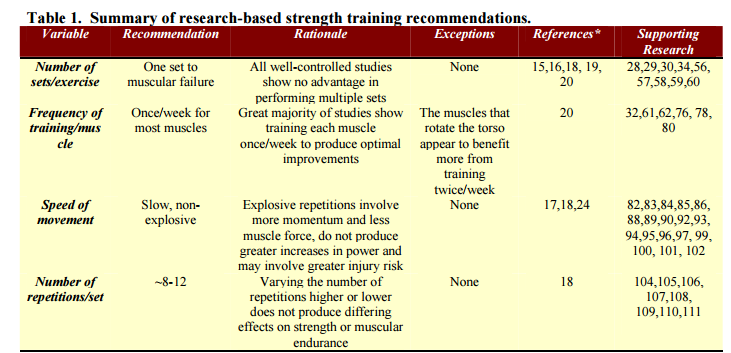
Then there’s recovery time. High-volume training generally requires more recovery time, which makes sense since more work is done while training.
In my own experience, I have had lots of trouble with recovery, often feeling like complete crap two days after my workout.
Besides that, I’ve also plateaued and would really like to get back to gains.
Hence I’m giving this system a go. It’s too early to say whether it’s working as intended, though my hunch says that it is.
Going to failure, cadence, and machines
The linchpin of this system is taking your repetitions to failure. Mentzer wasn’t dogmatic about the number of reps, but going to failure is critical. And this is total, gut-wrenching failure, where you’re straining with every ounce of your being to complete another rep.
Then when you can’t do another rep, you can use negatives (eccentric contractions, that is, lowering the weight) or assisted reps, helped by a training partner. Drop sets also work, when you can’t complete another rep, drop the weight down a notch, and continue the set.
Slow cadence is also important. I thought I was fairly good at eliminating momentum from my lifting, but truly getting rid of all momentum makes the lifts all the more difficult. There should be no jerking of the weights or using the body to throw the weight around.
Mentzer recommended a cadence of 4 to 5 seconds up, and the same down. Other “super slow” systems recommend even slower cadences, such as 10 seconds up, 10 down.
Surprisingly, Mentzer did probably 90% of his work on machines. Here’s another area where broscience leaves us lacking. If Mentzer got his physique using machines, it’s hard to see the great importance of barbells.
Recovery time needs to be increased. When a muscle is subjected to exercise intense enough to damage it, it takes a minimum of 4 days before its strength returns to baseline.
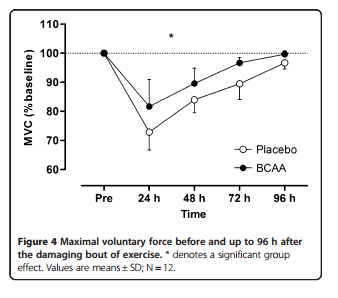
Mentzer trained some of his clients only once a week. He himself trained two to three times a week. I’ve currently decreased my workout frequency to once every 4 days, doing a two-way split, so that I’m hitting each muscle hard only once every 8 days.
Keeping yourself from going to the gym more often may be one of the hardest aspects of this system. We’re so accustomed to the “more is better” mantra, and that’s what most of the gym bros around us are doing.
It’s too early for me to say how well this system works for me. In theory it should be great, but it’s easily possible that I’m not doing it exactly right. I’ve sought out a high-intensity trainer in my area and will likely train with him sometime soon.

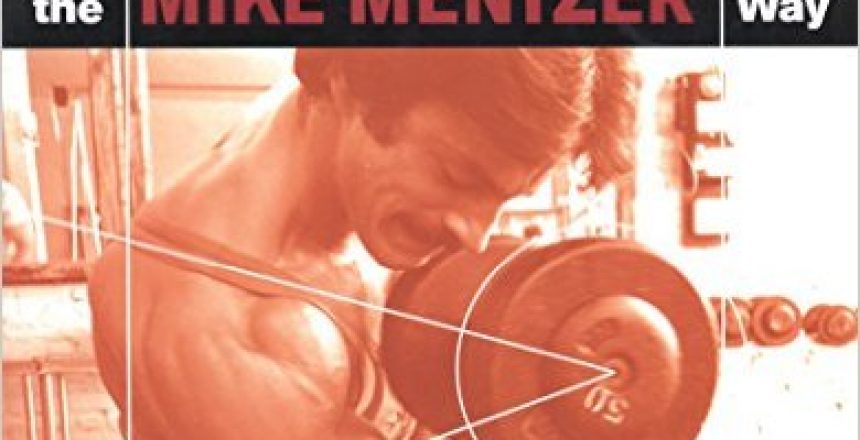

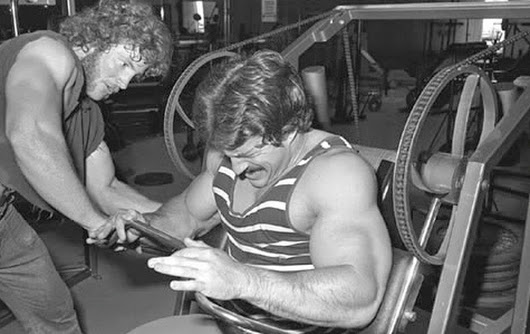
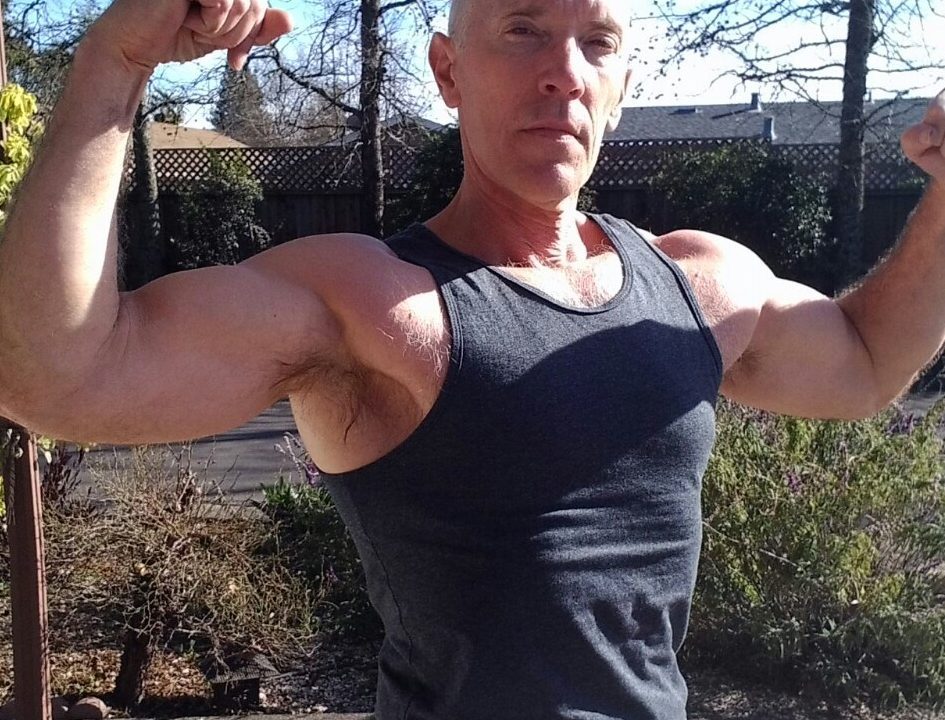









68 Comments
This is basically pretty much in line with what Werner Kieser has been advocating for years.
Off the top of my head, this high intensity style sounds similar to Dr. Doug McGuff’s “Body By Science” program. Uses machines, which might be the only way to truly “go to failure” without dropping the weights (unless you have a spotter).
-Steve
Steve, yes, this is almost exactly Body by Science, with some tweaks for bodybuilders. BBS recommends only the Big 5 (or 6) compound exercises, while Mentzer does things like triceps extensions and curls as well.
I’m an early 30’s man with 10 years+ of lifting experience. I’ve been doing BBS for 8 months. Observations:
– My size has stayed approximately the same; my strength has increased. (again, 10 yrs lifting = well past the 2 year max gains part of the curve)
– Zero injuries. Every other weight program I’ve tested (including bodyweight) resulted in injuries every 3-6 months. The common denominator with them that is absent from BBS is the extended recovery time.
– Workout scheduling: super efficient. I simply wait a week, and then do a workout whenever it fits within a 3-day window. This means I lift once every 7-10 days.
Protocol Notes
– the protocol described in the book is good for lifting beginners. Anyone with 6 months of lifting experience should test the advanced protocols.
– Stick to the system for at least 8 weeks. It will take 5-8 workouts before you understand your body’s response to the protocol.
– Upper Body Big 4 first (rotating the order each week), then bi’s/tri’s, and finish with legs. I aim for 45 seconds of straight lifting for each exercise, then 3 sets of 5 second rests + lift to failure after each rest. I use machines.
– Total time ranges from 14:15 to 14:45. Delta is a result of old people getting in my way between lifts.
– Rotation for experienced lifters: my first two lifts are great, while everything else is maintenance (except legs, which is unique). I discovered that this meant I needed to rotate which lifts I started with or else the muscle groups in lifts 3-5 of the static rotation never developed. Now I’m on a 4 week cycle based on the upper body big 4, and my strength always increases for the first exercise vis a vis the previous cycle.
– My hearing and vision go out after I finish legs. Always do those last.
I’m 56 yrs old, my training could best be described as consolidation training – every 4 days:
Workout A
Decline DB Press, Seated Row Machine, Legsled
Workout B
Seated DB Press – 75 degree bench, Pulldown, RDL with Trap Bar
I’ve dropped arm, AB and calf work
That’s awesome, Murray, very consolidated. How long would you say one session takes you?
I have been practicing the Doug McGuff Body By Science High Intensity Training (HIT) approach for several months now. The one-set to volitional failure per bodypart, focus on time under tension rather than reps and infrequent training are all very different to how I have approached resistance training for the last 20 years.
My headline observations are that –
1. I have neither lost nor gained strength or size and my body composition has also remained stable. The absence of any gains is not a negative given that my goal is maintenance rather than growth. I have not added a calorific surplus that would enable gains and if I had I may have experienced growth.
2. The lower training frequency is a great companion to intermittent fasting (IF) since it provides additional non-lifting days well suited to fasting without worry of muscle catabolism.
3. The lower frequency is also liberating in the senses that rescheduling a workout day does not feel like an opportunity was missed and that the time required for resistance training is also significantly reduced.
4. Focusing on time under tension allows use of a stopwatch to “measure” a set and enables me to almost completely forget about the rep count or time during the exercise and focus instead on the actual exercise itself
5. Thanks to enabling strict control of movement and very slow movement the risk of injury does appear to be massively lower relative to conventional training.
fully in line with your experience
Jay Campbell of FabFitOver40 did this style, as did Mike Cernovich. Campbell later switched to a Rippetoe style barbell program under the influence of Brett Osborne. I’m not sure what he does today. Cernovich I’m not sure about these days either. There are some old Cernovich podcasts with Jay talking about HIT.
I’m told that Markus Reinhart, who used to train with Mentzer (see https://www.youtube.com/watch?v=tcMOG0ECqDU) is also friends with Jay and Mike and still advocates HIT. He’s a big-time bodybuilder and trainer in Las Vegas now.
I just started a different approach.
My new routine has me working out 3 times a week. I bench 3x, deadlift 2x and squat 1x per week. Each day has a back exercise (chin-ups or rows) and 1-2 isolation exercises in a rest-pause kind of style (basically 1 set and then few seconds rest and more reps to failure). Only takes me 45min per workout and i lift in a reverse pyramid style — so my first set is the heaviest, the second and third set minus 10% weight each.
I hate lifting more than 3 times a week, simply because i have trouble progressing because i cannot fully recover. I also feel that many people do way too many accessory lifts.
I also do IF now, pretty much the LeanGains method (16/8) as well as calorie and carb cycling (maintenance calores on workout days and high carb, caloric deficit and low carb on rest days).
I feel like working each muscle just once a week (as mentzer suggests) is too little, unless you are already close to your natural limit.
This is close to the method that I’ve been using for 4 years and it seems to work very well indeed. My variation is that I do a basic full body lifting session once a week and a beauty session once a week. The latter being mostly shoulder, forearm, and bicep work that might make me look a bit better. Each session only takes 30 minutes. At 58 I’m as strong as I’ve ever been, so what you’ve written does ring true.
“Surprisingly, Mentzer did probably 90% of his work on machines. Here’s another area where broscience leaves us lacking. If Mentzer got his physique using machines, it’s hard to see the great importance of barbells.”
As far as I understand, the main criticism of machines is not that they don’t build muscle, but rather that they are poor at building functional strength, by forcing you into an arbitrary range of motion and isolating individual muscles.
You may look big and impressive, but end up unable to utilise your strength in a practical manner in day to day life, picking up heavy objects from the floor or pulling your own bodyweight around.
I have nothing to back this up, merely conjecture, so more than happy to be proved wrong by some evidence.
Could be true, Simon. My objection to the argument is not its truth value, but that I got along well without a lot of functional strength. I don’t do anything at all mechanical or any home-improvement type stuff. Most people also work sedentary jobs – hardly any ditch-diggers left. As far as benefits of weight-training go, 95% of it must be encompassed by health, mood, and appearance.
Broscience… yes. Of course. The entire HD training is an early marketing myth originally conjured up by one an only Arthur Jones. And that’s all I’ll say about that right now.
Yet… as for the absolute nonsense of “functional strength” vs. non, this whole thing is so fucking stupid it’s staggering. How is it your body gives a real shit if you leg press 2000 lbs or squat 200?
The only place where functional has any meaning is in elite athletics. And that’s less functional lifting than functional training. Which means to train for the position–the job at hand.
The idea that a body strengthened through resistance of “artificial means” is any less strong than a body trained through “organic resistance” of barbells is nonsense. Can’t lift a box? Yeah, just all blown up with fake muscles!
LOL!
Now, I have shredded Mentzer’s stories for years, including debating him in person, I am completely intolerant of this sort of myth and misinformation.
To Your Full Strength,
Shawn
Hmmm….the thing for me is, if you are going to pick up a box, go hiking with a heavy pack, run, swim – you engage many muscles through your back and core, as well as your legs, simultaneously. You’re using many small muscles to stabilize. This is also how you are conditioned ‘under a bar’.
Results aside, it does seem more unnatural to do things under load with isolated muscles using a machine. You’re training your body in a way that isn’t really representative of how it will be loaded ‘in real life’. Surely there must be a disadvantage in terms of neurological pathways etc.
Mike Mentzer did not develop his body with machines. He used barbells and dumbbells and was well developed long before he started using Nautilus machines. Well developed meaning he had a world class physique by golden days standards.
It is accurate that he used Nautilus machines later in his career after building his foundation with free weights.
Of all Mentzers routines, the consolidated and not the ideal routine is the best routine there is.
https://youtu.be/LlfhKaSN6_o
So I did my first session of this , this week and will record my progress, 1 set to failure per week 4 seconds up 4 seconds down
Have to say the slow cadence definitely makes it alot more intense I had to drop the weight alot to manage it especially since im going to failure
doing a slow up and down deadlift REALLY hits the back and lower back ultra hard.
I did my first slow deadlifts the other day, and I agree.
Are you guys confident that deadlifts are an appropriate exercise to take to failure? I would not attempt to myself, fearful of what failure could mean for the lower back. Context is that I do have experience of herniating a disc in the lumber spine.
I had to go to a much lighter weight.
many people refuse to do this I suppose because lowering weight makes it feel like your not progressing or progress is going backwards,
I dont see how you can do a slow 4 second cadence and NOT lower the weight lol,
its a good message to get out there, let go of the ego, lower the weight , its just about giving the muscle a good workout,
If you haven’t already, give trap bar deadlifts a go. Keeps the back much safer and allows for sets to be taken to failure. Keep tight on each rep and lower the plates to the floor on each rep. Reset and make your next pull. Done properly, this form of DL’s will put a bit more emphasis on the hips and legs but work’s very well has a posterior chain and really full body movement.
Hi Dennis, well I have to say I am glad to see that you have embraced the HIT approach: I was dropping a few hints to you in my previous comments! I started out with a strict Body by Science approach 1 year ago, and have learned one or two things that you may (or may not!) find useful:
1.) I found that 2 sets of each exercise, rather than 1 to be optimal: this seems to be supported by the research I was reading.
2.) I started out with a 10/10 seconds cadence, but this felt very unnatural. If you check out Drew Baye’s 21 Convention video (as recommended by Doug McGuff), Drew outlines why 10/10 cadence has major drawbacks. I found 5/5 to be the most effective, which seems to be the sweet spot most recommended by HIT trainers.
3.) In terms of number of reps: it seems that the optimum ‘time under load’ is around 90 seconds, so for a 5/5 cadence, that translates to around 9 reps.
4.) You don’t need to ‘inroad’ too hard if you are going to complete ‘positive’ failure (ie drop sets, negative-only, etc). The reason being that complete positive failure seems to provide 100% of the required stimulation to the muscle: if you go further then you are just eating into your recovery time.
5.) For this reason, I don’t ‘superset’ as such – I just go through a ‘big 3’ circuit twice, with as little rest as possible between each exercise. That way, I am still getting the ‘metabolic effect’ as Doug puts it of lactic acid build-up leading to greater anabolism, but each muscle group can rest a little as I am going through the circuit.
6.) I finish up with 2 or 3 supersets of ‘isolation’ movements: ie lateral shoulder raises, rear deltoids, abs or bicep curls, as I figure these exercises are less draining on the central nervous system.
7.) Like you, I have settled on a 2 way split, although for simplicity I just keep it Monday and Friday so I can schedule in those 2 days as my workout days.
8.) Doug takes BCAAs after his workout, also the next morning. I do this too now: albeit with whey protein isolate as opposed to BCAAs as I believe good undenatured whey contains additional benefits.
9.) Doug works out fasted, which he seems to have picked up from Martin Berkhan (apparently completely draining your muscle glycogen stores whilst working out leads to greater anabolism). I do the same, which necessitates taking 10g of BCAAs just before the workout (not whey here as it is better to limit the calories until the post-workout meal). One of your charts in your post refers to BCAAs which seems to show the benefit – but you didn’t make reference to that?
10.) Progression is vitally important, and should be the yardstick by which you measure your workout. I use free-weights at home, and I bought a set of very small 0.5kg plates and make sure that every week, I am able to either load an extra 0.5Kg on each side of the dumbbell or barbell, or add an extra rep. I always have a chart/ smartphone with me when I workout so I can monitor my progress. As long as I am keeping all the above variables the same and am still able to either add another plate (or add another rep, if I added the weight last week) then as far as I am concerned it is working!
Rob, thanks for the report. Sounds like your workout must take all of about 15 minutes. As for those BCAAs, I have in mind to write something, though I did write about them here: https://pdmangan.com/branched-chain-amino-acids-fat-loss-lean-mass-lifespan/
Thanks for the link to the BCAAs Dennis, I would be very interested to read it if you have another post on that subject planned.
Yes, my workouts are usually around 30 minutes all in, but as they are home-based it includes around 15 minutes to set up the barbells/ dumbbells – since I am trying to minimise rest between exercises it means that each exercise needs to be set up in advance. The best 2 protocols I have come across so far are Doug Mcguff’s ‘Big 5’ and Martin Berkhan’s ‘Reverse Pyramid Training’ : after having tried both for a few months each, my current protocol is really a hybrid between the two. On Mondays I will move quickly between bench press, squat, incline bench press, bicep curls on a 5/5 cadence, aiming to hit between 8 to 9 reps (ie 90 seconds time under load). When I achieve 9 reps I will increase the weight by just 0.5Kg each side the next week. With 30 seconds rest, I then do the circuit again, but will strip down some of the weight off the barbells/ dumbbells so that I can achieve around 7 reps on my second set: but I just view this second set as a ‘bonus’: it is the first set that is the most important and will determine my progression going into the next week. Similarly, on a Friday I quickly move between a bent-over row, a shoulder press, an underhand lat pulldown and a lateral deltoid raise, before doing a second circuit. I just throw in 2 x additional sets of bent-over rear deltoid raises at the end (very light dumbbells) and a 80 second set of planks for the abs. That’s pretty much it, but this hybrid approach seems to work best for me: the 2 sets feels like it is achieving optimum stimulation, and anymore would be overkill – negatively effecting recovery. Similarly for the twice a week frequency (albeit on a split routine).
I guess it is important to view the work-out as only comprising the ‘stimulation’ part of the equation. Adequate recovery and nutrition seem just as important – if not more so. I heard a very interesting podcast with a UK HIT expert recently who advocates eating protein every 3 hours during your eating window (including the use of whey shakes), to ensure optimal protein synthesis and hypertrophy.
If anyone has any thoughts/ advice on my current protocol – do let me know!
Rob, your post has intrigued me about your version of HIT. Would you be able to post/email me your workout regiment?
Hi Sam,
No problem, my current programme (takes 30 minutes) goes like this:
Mondays: Bent over barbell ‘Yates’ row, barbell shoulder press, close-grip cable lat pulldowns, dumbell side lateral raises, chins, bent over dumbell rear delt raise, cable triceps push down, plank, crunch (Drew Baye style), neck isometrics and air squats (ie no weight).
Fridays: incline dumbell bench press, straight arm cable pulldown, barbell squat, incline dumbell chest flys, bicep barbell curls, push-ups, dumbell pullover, incline push-up, plank, crunches (Drew Baye style), neck isometrics.
Cadence: 5 seconds up, 5 seconds down for all exercises. Rep range 8-9 reps. I try to move from one exercise to the next without any rest, but sometimes I need to, eg when I am re-loading my barbell..
Its constantly evolving as I learn more: for instance since I wrote the comment above 6 months ago, I have moved from 2 sets of each exercise to only 1. Reason being as you progress with increasing the resistance it does become exceedingly taxing on your ability to recover, and I was beginning to stall if I did 2 sets, so I now just keep it at one very high intensity set to ensure the muscle is stimulated. I have though added in a few new exercises as per my list above (eg chins, push-ups) as I think the more variety in hitting each muscle group the better. I also make sure I do the more taxing (ie compound) exercises at the start of the routine and leave the smaller muscles to the end. By the way, if you are looking to tone up your abs adding in the Drew Baye crunches at the end of the routine made a huge difference! So far I am still just about managing to either increase the resistance by 0.5Kg or increase my reps every week. It is very interesting when your progress does stall though, as it gives you the opportunity to start tweaking your protocol to see what you need to do to start making progress again.
Hope that helps? If anyone has any thoughts/ feedback do let me know!
Rob H.
Heavy Duty… Uggg…
Silliness that lives. One set to total failure (as opposed to other sort of failure). Whatever.
This entire theory was born of Natulis’ Arthur Jones marketing and story writing and carried on with MM because he loved the absolutism of it and it fit his ranting Randisms of his decaying world view.
Strength and muscle is earned through a volume of training. It is not a set but a workout.
Where it lives on is in the mythic nature of man and the obsession with extreme approaches. Our need to believe in magic is alive here.
It is also carried on my the fact that few who profess to practice it, do so in its pure fashion, as intended. Most train heavier and lower volume for awhile and credit Heavy Duty. When they are actually doing 8-10x the volume Mike spoke about.
Will a change from one style of typical bodybuilding style training to HD-like offer a step in some functions? Sure… as does most any change. Yet, this is half because the body needs recovery.
Altering your training with a macro periodization is great. It’s smart and refreshing.
Yet, as I said to Mike in our Muscle Media live event in Vegas, you’re missing the point Mike. We train not exclusively for the end result but the experience. We train because the joy of training awakens and strengthens us. To presuppose that art of the training session is a negative–a time suck–and the only goal is the gains, it to miss the point. If Da Vinci could pain a masterpiece in one brush stroke, would he? Of course not for the painting is the end result of the joyful, agonizing, fully engaging process of making art that truly brings us alive.
Train for the journey. Fall in love the the process and let the results come as they shall.
Best Strength,
Shawn
“We train not exclusively for the end result but the experience. We train because the joy of training awakens and strengthens us. To presuppose that art of the training session is a negative–a time suck–and the only goal is the gains, it to miss the point.”
Yeaahh, I’m gonna say a big fat no to that. Your concept is not universal. Training -IS- a huge time suck for many of us. If I could train 1x per week for 30 minutes and see the same gains as the 3x a week for 1-hour I do now, I would jump ALL over that. For some (many) of us, the end result -IS- the goal. We want strength 1st and size 2nd. We train to be fast, strong, and healthy so we can use our speed, strength, and health doing other activities we actually enjoy (family, hunting, fishing, sports, etc.) The less time in the gym…the more time for other stuff.
Mike Mentzer always made it clear that the methods he advocated were to produce maximum muscle growth/mass that the practitioner was genetically capable of.. Nothing more or less.
The bottom line and in between the lines is that you have to work very hard but within your capabilities and in as perfect form possible. Call it heavy duty,, HIT, plain old hard ass work or whatever you wish.. it’s all the same. Use as much weight as you as an indiidual can in perfect form and hard as you can at any particular session. Eat properly and rest.
I know that doesn’t sell Like the next new acronym for the latest secret training method but that’s all there is to it. Too much thinking. Just lift the weight!!
I used to train the HIT way based on the protocol Tim Ferriss describes in his book Four Hour Body. Maybe I should’ve done more exercise than the four he advocated, but I didn’t really get too much stronger. It was super easy to do and gave me some additional LBM over being a couch potato, but nothing significant.
After years of doing HIT, I switched up to a Minimalist Power and Bulking Routine (https://oldschooltrainer.com/minimalist-power-and-bulk/). I’ve definitely noticed an increase in LBM, but especially strength. I picked up a wine bottle now and it feels so much lighter. I had never done dead lifts before, so maybe all this increasing in strength and bulk had something to do with the new exercises. I don’t know.
I definitely think people should try out Body by Science if you’re interested. If people have already attempted HIT with mediocre results, then I would suggest moving on to more complex exercise regiments, akin to the url I posted above.
Mentzer is my favorite HIT artist, no doubt about that. But I have tried his prescribed frequency and its just WAAYY tooo loowww…
The system is great but the frequency is off – the only time it works is when you got in a plateau for the shock factor in case you have been under-recovering for a long time already.
I found out however that his teeth to the metal techniques work best when mixed in with traditional systems. For example we can apply the Inflitonic reps (https://aboutlifting.com/weight-lifting-technique-from-hell-the-inflitonics/) for the last set o your major compound move for your chest and not rest until you can no longer even lower the weight slowly (so brutal).
All in all Mentzer’s system works best given more frequency.
No doubt that most of his clients have gotten better results when after he passed away were transferred to the care Charles Glass who used a more or less more traditional approach.
Even Mike himself they trained keeping the HIT techniques in mind BUT mike used more frequency than he preaches.
Mike had the genetic predisposition to do more. Most of us mortals do not.
Single-set/HIT vs. more traditional multiple set programs are an old subject of debate. The consensus in the strength training world nowadays seems to be that, in general, more sets are likely going to lead to greater gains (in both strength and mass). A fellow named James Krieger did a pretty thorough meta-study that seemed to validate this: https://www.ncbi.nlm.nih.gov/pubmed/20300012
That said, if you’ve plateaued on a multiple set program, trying a more HIT-style program is not a bad idea — periodization is a proven concept. But in general, the more work you do (as measured by volume-load), the more gains you’ll get….although the marginal utility of more work declines as volume goes up.
Here’s a recent study that found no difference in strength between 1 and 3 sets in veteran weight trainers. https://www.hindawi.com/journals/bmri/2013/615901/ However, the 1-set group lost significantly more fat than the 3-set group.
Update: Here’s one that found no difference in strength or lean mass gains between 2 or 3 times a week training in older adults. https://www.sciencedirect.com/science/article/pii/S1728869X12000081
That’s an interesting find. I wonder what kind of program those subjects were doing prior to the study. What could be the case is that they were doing a higher volume, lower effort routine prior to the study. Thus, those in the single-set group experienced a change in routine, which is usually a good thing. As Dan John has stated, “Everything works for about 6 weeks, nothing works forever.”
This is making me think I may try a HIT-style routine for a few weeks again. I used to do that for years, had plateaued on it, and after changing to multiple sets, experienced greater gains and have done multiple sets on most exercises ever since. Perhaps it’s time to go back.
Here’s an interesting study….it seems to suggest that whether or not single-set training works as well as multiple-set training could depend on your genes: https://www.geneqol-consortium.org/wp-content/uploads/sites/9/2013/07/Colakoglu_ACE-and-strength-training_Eur-J-Appl-Physiol-2005.pdf
The problem with Mentzer’s prescription isn’t the load and the time you spend each session. You really must be doing shorter but more intense (more effort) sessions but such sessions must be done more OFTEN. Yes Mentzer’s way is good but just disregard his frequency prescription and you are good to go!
Frequency is based on progress – you should get stronger from each set of a workout. If not you require less sets and / or more rest days.
I can only progress if I do no more than 3 sets very 4 days.
https://www.dailymail.co.uk/tvshowbiz/article-3634586/J-K-Simmons-trainer-reveals-star-got-completely-ripped.html
Check out what 61yo Simmons is using – he’s doing bicep curls with 20s. Disregarding the obvious possibility of steroids/TRT, it appears that he is doing some sort of low-weight/high-intensity program.
Also, Dennis, you need to get like that so you can be an internet sensation too. =)
Thanks for that, JP. Simmons is probably doing something else besides high-intensity lifting, like certain medications, I’d bet. No hate on him, but I think a lot of people believe that if you just work hard, you’ll look like him. But I doubt it. BTW, again no hate, but his face looks quite old, and he’s the same age as me (2 months older – I looked).
Yes, I’d like to get looking like that – one makes money that way!
Seems kind of like the opposite of the “grease the groove” idea.
Grease the groove is for those who seek more of “power” and lifting heavier poundage. If your goal is aesthetics, grease the grove does very little to help. Same thing vise versa
So it’s been nearly 6 weeks since this very intersting discussion began. Does anyone have updates to report in their training?
Me, I don’t think I’d ever heard of this before, but like Mr. Mangan, I have always tried to do controlled, steady movements in my reps. So many guys swing the weights around….
I’ve been doing a 3 sets x 8-12 reps routine since getting serious about the gym in January. I do upper body one day, rest day, legs & lower back, rest day, HIIT & abs, rest day. So every other day in the gym, each muscle group every 6 days. I’m 51, and this seems a reasonable recovery schedule for me.
After reading this at about the start of June, I started doing slow reps. Same number of reps & sets, not much less weight, just slower. And man, what a difference it is in intensity! Late at night in bed, my heart is still pounding, even the next morning. And I’m just wiped. And I THINK it’s working with muscle gain, but then again, there are a lot of other variables at play in my case, being only a few months into serious training and nutrition optimisation.
But then I came back and read through this all again yesterday, and realised that I’m not doing it “right”: 3 sets, not necessarily to failure, also not as slow as 8 true seconds in total. And so I tried to go even slower with today’s upper body session, and golly, it’s hard. Going past 60 seconds under load to failure, especially on the bench presses…dang.
Anyway, I’ve got 2 more sessions this week until we’re off for two weeks’ holiday, during which I think I’ll just do HIIT. After we come back, maybe I’ll give a real go at truly slow reps and single sets. But it just doesn’t sound right.
I’d be quite curious to hear if others have anything to report.
Nick, your experience is similar to mine. The high intensity workouts are ass kickers. I had to back off my schedule so I do one workout every 4 days, with a 2-way split. I am definitely getting results – I can see my quads have become bigger. I do those leg presses like there’s no tomorrow, one set, along with a set of leg extensions. Typically, my workouts take 35 to 40 minutes (previously, more like 70 minutes). I sometimes do 2 sets instead of one when I feel like I didn’t really get to all-out failure.
The soreness I get from HIT is like nothing I ever got from conventional lifting, except as a newbie. So I’m going to continue this way of lifting, and at this point I don’t see going back. It’s just too effective.
Cool. It really seems sensible to me to load your muscles longer, in BOTH directions. Back in the 80’s, in my previous weightlifting life, we talked about “white / red” muscle masses, where white was the ends of the muscles and red was the middle. Fast, heavy lifts supposedly worked the white ends, where slower lifts worked the red middle. I suppose this is where the kids are talking about “fast / slow” trigger muscle tissue these days; I need to learn up on all that.
I’ve got a leg day tomorrow and an upper body day on Thursday, I’ll try going lighter and slower, to failure, and not care about the strange looks I get.
Another thing I’ve been wondering about. Having gone from about 1991 til 2012 without setting foot in a gym, I have to wonder if one thing has changed. Back then, I was a US Swim & Fitness member in MN. Now, it’s the local gym here where I live in Germany. People tend to sit on the machines between sets, not get up and walk off their completed sets. Is this a 21st century thing or a German thing? (Mind you, by and large they don’t work hard enough to need to get up and walk off a set.)
I see people sitting on the machines a lot between sets — not to mention, hogging the power rack (there’s only 1 in my gym). Not a German thing, it’s done by clueless people everywhere.
Forgive me Mangan, for I have sinned. It has been 19 days since my last session in the gym. (Well, we were off on vacation for 15 days.) I have eaten starches and other crap. I have slept too little, staying out drinking ale too late.
As penance, I’m off to the gym for an upper body session. Wait…that’s not penance, that’s a reward. OK, the penance will be the pain afterwards. And I will strive to do slow, single sets, hopefully making it to 90 seconds under load.
Sersiously though, any further updates on this, anyone? I’m a believer in the time-under-load principle now, though still struggling with the idea of reduced numbers of sets and sessions per week.
Hi Nick – I’m thoroughly convinced by the high intensity way, and at this point, barring some further development, can’t see going back to my old way of training. I’m getting gains for the first time in awhile. The short workout time takes some getting used to, especially if you like the gym, as we both do. Yesterday my session took under 35 minutes, and I was stretching it. OTOH, the session was done almost continuously, without a break, so it was intense, with heart rate greatly elevated the whole time, breathing very heavily. When I first started this way, I would do a couple bouts of jump rope after because I though maybe I hadn’t done enough cardiovascular work, but now that I’ve more or less figured it out, I neither need nor want to do anything after.
I also struggle a bit with reduced frequency. Session before last was 5 days after the previous, just because I felt I needed the recovery, though 4 days is more typical.
I played around half-assedly with this idea a year or so back. After reading your article I’m giving it an honest shot. I’m three weeks in, working out twice a week about 45 minutes each session. And I like it. Now, I am adding a twist to it. A twist that has no other merit to it (to my knowledge, that’s why I’m asking you) than that it feels “good”. I came across this page advocating “eccentric isometrics” (couldn’t figure out how to add the link in the comment, can provide it if you want it), basically a slow eccentric phase, a couple of second long static hold at the bottom, then a strong, determined, explosive contraction. My feeling is that it works well for some exercises (squats, DL’s, presses). Perhaps even better that just the slow eccentric followed by slow concentric movement. If you have an opinion, I would be very interested in knowing it. Thoughts or experiences?
Eccentric (negative or lowering) exercise is effective for gaining strength, and Mentzer recommended them. It’s a little easier to use a faster move in the concentric, then one can lower the weight slowly. So this is all good IMO.
“Load means reaching for the heaviest weight possible. Power lifters do at least some of their training this way.”
Some? The fault of most powerlifters is that they do too much max weight training.
Most of the currently extant high-end PL training comes from Eastern Block Cold war era exercise science and was more in line with what we know now.
The Westside training regimens (Westside Barbell is a top PL group) Popularized limiting the time spent in which gym for any one muscle group. One heavy day per week, followed by one light day per week per body part. The light day is generally less than. 33% of your 1RM, and serves to stimulate blood flow (active recovery).
I’m 46, 220lbs and have a 500lb raw bench, and still increasing…and I only spend about two hours of heavy upper body work a week, and 45 min of light upper body work on the light day.
One’s gains are made in the rest and recovery, not in the gym.
P.D. — Good write up, please keep us updated on your thoughts on this. I also found this book and finally read and understood what Mike had been saying all those years ago. I was a young volume bodybuilder from the 80’s & 90’s that had been out of it for 15 yrs and never understood why I could not grow like I thought I should have. Now I understand I was chronically overtraining. I just completed my first 8 week HIT cycle, and am currently going nuts on my “off” week. I settled into training 1x per week, on Sundays. After a bit of playing with things settled mainly into 4 true HIT sets per bodypart/group with about 12-15 HIT sets per workout, then 7 days of rest. The HIT is devastating, and wonderful. A complete muscular exhaustion I have never felt into a deep deep awesome soreness that lasts about 3 days, with minor soreness into day 5. Yes, I know it is a bit much as per Mentzer standards but seems to be about right for me. Reps and weights consistantly climbed all thru the 8 weeks (at 47 yrs old). Hoping to see that continue, and adding creatine for this cycle. I am practicing 4 second cadence with minimum 2 second static hold if applicable. So far I am loving this beyond explaination, no more guessing, just brief intensity, then lots of rest. As someone had noted above later studies did come to show Mike was wrong about only 1 set for best growth stimulation (to minimize inroad), but those studies also showed as long as more than 1 set was done there was no difference as to how many beyond that. So to me, 2 sets is all it really takes, though I do like a second exercise for at least 1 more. The only other thing I wanted to mention was if by chance someone tries this the first time be sure to YouTube Mike Mentzer HIT. You will see videos of Mike himself taking a bodybuilder through a workout. This, more than anything else, really helped me understand the core of this HIT thing. That is what really gave me the routine. Thanks to you forever Mike Mentzer.
I’ve settled in on two sets to failure, targeting 90 seconds or longer, basically the same mix of compound and iso sets I’ve always done. I work my arms more though, three sets. I tried going down to one set, but just couldn’t get it to a point that felt right. My workouts –split upper & lower body/abs– take about 2 hours, Tuesdays & Fridays.
I feel like I’m getting stronger, even if I’m not increasing the weights at all. Really wish I’d done some measurements, like body fat and circumferences. But the little woman is proud of the work I’ve done since the Spring, so there’s that, at least.
I’m going to have to look up the Mentzer video.
Warm up?
I am 72 and a relative newbie to weights. I read Body by science, and was convinced to switch from the conventional routine which took me an hour three times a week. This is my third week, and I like it, eve though I have not yet seen a !measured improvement.
My question are
1. What should be m!y warmup ?
2. Can I do my daily hour of swim drills before the weight session?
Hi Isaac, my own warmups are exceedingly brief, and if you do a Body by Science type workout, I doubt if you need much more. Since the amount of weight your doing in each exercise should give you time under tension of 60 to 90 seconds, they won’t be so heavy that you risk injuring yourself. As for swimming, sure, you can do that before. However, doing high intensity training requires giving it all you’ve got, so it’s possible the swimming might take some of that out of you. My preference would be to swim on different days or after the weight workout.
Ok, here’s my take on high intensity training. A few years ago, maybe 6 years back, I decided to give it a try along with my workout partner at the time. After sticking to HIT for about 5 or 5 months I made zero gains. My strength levels began to drop about 6 six weeks into it and naturally, I backed off a bit.
I think for me the deal is, going to failure week after week set me back. Maybe my CNS wasn’t able to handle it. Looking back I’d probably do a deload week once a month, every 4 weeks, or simply take a week off every 6 to 8 weeks.
What has worked for me instead is doing short workouts, 3 times per week, 3 exercises and going 1 rep short of failure. I even wrote about it here https://looklikeanathlete.com/minimalist-training-for-mass-gains/
But I might give HIT a try again some time in the future but I’d just take a week off here and there to avoid plateauing since that was the biggest problem I had before.
-Sam